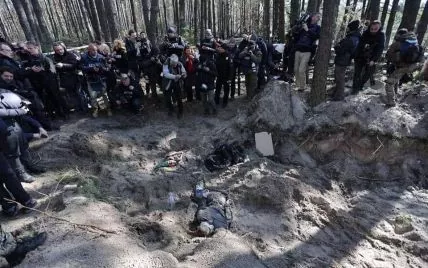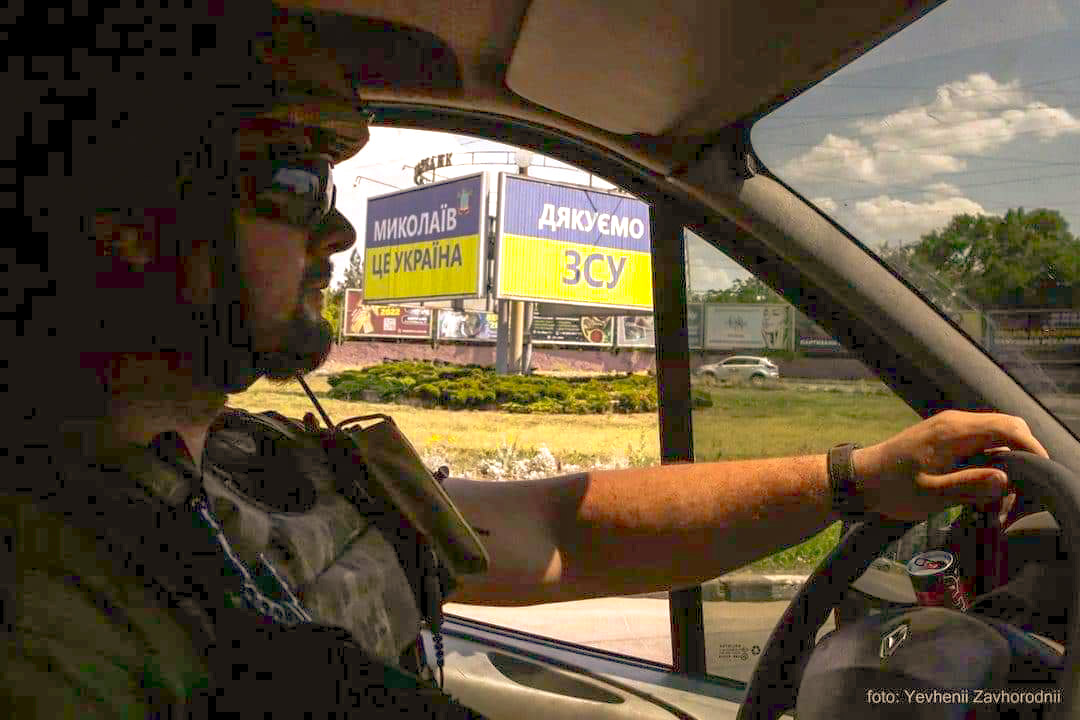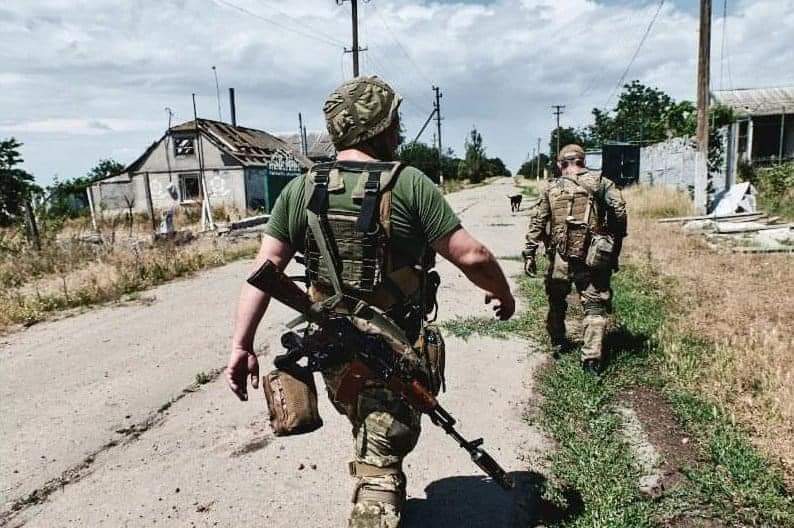International humanitarian law (IHL) is a body of law specifically designed to protect civilians and those who have laid down their arms.
To this end, IHL imposes obligations on all parties to an armed conflict to comply with its foundational principles, including distinguishing civilian and military objectives and taking precautionary measures to protect civilians from the effects of armed attacks, both of which entail, in given situations, certain restraints on fighting or locating in or around populated areas.
As the Ukrainian Government appears to accept, every military – whether fighting for its sovereignty or preservation of its people or otherwise -- must abide by IHL and be seen to be doing so. No warring party, however righteous their cause, can evade these demands. Being on the side of the angels is no defence.
But human rights organisations, especially those with the international reach of Amnesty International (AI), have a correlative obligation to ensure that trenchant allegations alleging failures are based upon a comprehensive fact-finding exercise, a proper methodological approach and conclusions that take into account the realities of a beleaguered government’s attempt to defend its population from systematic war crimes, a persecutory campaign encompassing crimes against humanity and possibly genocide.
How Russia justifies the murder of Ukrainians: Russia’s 2022 “genocide handbook” deconstructed
By no stretch of the imagination does yesterday’s press-release by Amnesty International meet that solemn obligation nor appear to serve any useful protective function.
Amnesty International’s Press-Release is critical of the Ukrainian Armed Forces and accuses them of serious violations of IHL, e.g.,
- “Ukraine’s tactics have violated international humanitarian law as they’ve turned civilian objects into military targets”
- “[Ukrainian military failed] to take feasible precautions to protect civilians”
- “[t]he Ukrainian military has also routinely set up bases in schools in towns and villages in Donbas and in the Mykolaiv area.”
The problem of course is not the making of these allegations, which need to be made – and made clearly – if the evidence establishes them to be true. That is the role of Amnesty International, often played to great effect.
But in this instance, Amnesty International’s methodology is not only unclear, but considers little to none of the military or humanitarian context essential to any reasoned view of what was (or was not) necessary in the prevailing military context.
Failure to consider the available facts
AI’s failure to explain the methodology employed to conclude that the Ukrainian military "has endangered Ukrainian civilians by establishing bases and operating weapons systems in residential areas - including in schools and hospitals" is troubling.
Claiming to have based its analysis on witness evidence, strike sites inspected, the selection of criteria and “remote-sensing and weapons analysis,” Amnesty International deftly sidesteps any real examination of its methodology by declining to provide any meaningful detail of their purportedly supporting evidence.
The reader is left to guess at the number of witnesses interviewed or strike sites inspected, which selection criteria were examined, and the expertise purportedly deployed to carry out remote-sensing and weapons analysis.
As discussed below, the principal IHL matters raised in Amnesty International’s Press Release concern two fundamental requirements imposed upon warring parties:
- the principle of distinction (distinguishing civilian and military targets);
- the obligation to take precautions to protect civilians from the effects of an attack, including issuing effective warnings of an attack and evacuating of civilians from combat zones to protect them from harm.
If AI, or any human rights organisation, seeks to allege violations, it must address the high standard of proof required in human rights fact-finding missions - the "clear and convincing
" evidence standard.
According to this standard, evidence is clear and convincing when it is highly and substantially more likely to be true than untrue. This is a less rigorous test than the "beyond a reasonable doubt" test, but nonetheless requires proof that "there is a high probability that a particular fact is true."
As any impartial reader can see, Amnesty International’s Press Release is hopelessly devoid of this kind of convincing analysis or proof on issues of fundamental importance.
The most obvious observation concerning the principle of distinction must be that the Ukrainian armed forces must do what is militarily necessary.
They do not enjoy a freedom of choice regarding where to defend. That defence has to correspond to the nature, scale and point of the attack.
If the Russians choose to attack civilian areas, then by definition, the Ukrainian defenders have no option but to position themselves and be ready to fight and defeat the Russian aggressor there. This is not theoretical.
As anyone with an eye on this invasion knows, Russia, as a matter of strategy, attacks residential areas and seeks to destroy civilian buildings and kill civilians.
All of the following factors are critical:
- reconnaissance;
- observation;
- fields of fire;
- concealment and cover from enemy fire;
- avenues of advance and withdrawal;
- and lines of resupply.
Indeed, as is plain, it is only through the appropriate consideration of these factors that Ukrainian commanders have been able to mount a largely effective defence against superior Russian forces and thereby protect its civilian population.
A fundamental misunderstanding of tactical and strategic warfare
Only through an examination of these factors can any human rights fact finder reach valid conclusions concerning allegations that Ukraine impermissibly placed its army into civilian areas and thus violated the principle of distinction.
As a reading of the Press Release shows, AI failed to consider any of these most salient issues.
Indeed, as Amnesty International admit, their analysis was not based upon a specific investigation into Ukraine’s military or necessity. As Amnesty International’s reliance and focus on missile strikes and sites suggests, the "evidence" gathered to accuse Ukraine was gathered during an investigation into “Russian strikes.” But still, this does not explain why AI did not even attempt the relevant fact finding or analysis.
Moreover, the self-evident analytical deficits are not remedied by AI claim that the residential areas, where the Ukrainian military deployed, were
“kilometres away from front lines. Viable alternatives were available that would not endanger civilians – such as military bases or densely wooded areas nearby, or other structures further away from residential areas.”
Putting aside Amnesty International’s failure to offer any explanation of the alleged "viable alternatives," their analysis betrays a fundamental misunderstanding of tactical and strategic warfare and the correlative demands of military necessity and IHL in general.
As every Ukrainian commander knows, and as Amnesty International has previously reported, failure on their home soil and in defence of their own people, has the most terrible consequences for Ukrainian civilians at large.

Amnesty International's analytical failure to address most salient questions
This may explain why in relation to taking precautions against the effects of an attack, IHL does not absolutely and unconditionally prohibit locating military objectives in urban areas or movement of military vehicles through populated areas. Instead, IHL obliges
the parties to the conflict to undertake precautions to protect civilian population against the effects of attacks.
Ukraine, as the defending party, must endeavour “to the maximum extent feasible”:
- (i) to remove civilians and civilian objects from the vicinity of military objectives, and to avoid locating military objectives within or near densely populated areas and
- (ii) to take other necessary precautions to protect civilians and civilians objects from the dangers resulting from military operations.
As the ICRC has acknowledged, effective precautionary measures can take many forms, including the
“construction of shelters, digging of trenches, distribution of information and warnings, withdrawal of the civilian population to safe places, direction of traffic, guarding of civilian property and the mobilization of civil defence organizations… [these are]… measures that can be taken to spare the civilian population and civilian objects under the control of a party to the conflict.”
What is feasible will depend on the environment of the attack and a range of factors including time, terrain, weather, capabilities, available troops and resources, enemy activity and civilian considerations. Feasibility of the precautionary measures is assessed on a case-by-case basis taking into account
“all circumstances at the time,” including that the State’s or commander’s decision-making power is limited by their knowledge and the circumstances at the time and cannot be subject to subsequently informed analysis.
As is plain, there is no evidence within the Press Release to suggest that AI considered, let alone drew reasonable conclusions about, these issues.

To the contrary, Amnesty International appears to have actively avoided this analysis. According to comments of its Ukrainian counterpart, AI had to be "convinced" even to ask for an official comment from the Ukrainian Ministry of Defence (MOD).
According to Amnesty International, it contacted the MOD “with its findings on 29 July, but at the time of publication it had not yet responded.” The Press-Release was published on the morning of 4 August, granting the MOD – which we can safely assume is presently more than usefully employed -- three working days to respond.
Putting this absurdly short window aside, even Amnesty International’s wording suggests an analytical failure.
Contacting the MOD was not a courtesy but an absolute requirement if correct conclusions were to be reached.
What was militarily necessary? Were there viable alternatives? Did the military provide any warnings (as evidence categorically shows it has on numerous occasions since 24 February)?
Did the Ukrainian Government/Military to the "maximum extent feasible
," remove civilians and civilian objects from the vicinity of military objectives? (again, as evidence categorically shows, it has been done on numerous occasions through the provision of the means for civilians to evacuate (e.g., by train), and using the police and emergency services staff to facilitate)?
Amnesty International appears not to have concerned itself with the most salient questions. If it had, the authors of the Press-Release would, at a minimum, have sought to reconstruct the military activity at the time and focused upon any efforts made by the Ukrainian military active at the time to defend the locations and the beleaguered civilian population.
At the very least, they would have spoken to the Ukrainian MOD and any of the highly professional local humanitarian organisations working on the ground at the time.
Who knows, if Amnesty International had done so, it might have found that the Ukrainian forces took all feasible measures to protect its population against the effects of hostilities while defending the population and territory against the crimes of the Russian forces. A quieter, more sober conclusion but perhaps a fairer one.
Later, both the spokeswoman of Amnesty Ukraine and Pokalchuk resigned over the International Office's report.
Ukrainian officials responded to Amnesty’s International accusations against the Armed Forces of Ukraine calling them “unfair,” “manipulative,” creating “a false balance between the victim and the criminal.” Ukraine routinely conducts measures to protect civilians, and, while it is open to international investigation and Russia blocks all access to occupied territories, reports examining only the actions of the victim cannot be objective. The primary efforts of international organizations should be directed at ending Russia’s war, not instructing the Ukrainian Army on how they should defend themselves from genocide, officials said.
A version of this column appeared in Ukrainian on Ukrainska Pravda

Wayne Jordash is the Director of Global Rights Compliance Foundation and a world leading lawyer specialising in international human rights and humanitarian law, particularly in high risk and conflict-affected areas.

Anna Mykytenko is a Senior Adviser and the Ukraine Country Manager at Global Rights Compliance Foundation. Anna advises Ukrainian state authorities on compliance with international humanitarian law, and the investigation and prosecution of international crimes.
Related:
- Ukrainian officials slam Amnesty’s International accusations of Ukrainian Army
- Amnesty Ukraine took no part in Amnesty International report alleging Ukrainian army endangers civilians
- Amnesty Ukraine spox resigns after Amnesty International report on Ukrainian Army
- Amnesty Ukraine chief resigns after Amnesty International’s report which “became a tool of Russian propaganda”

